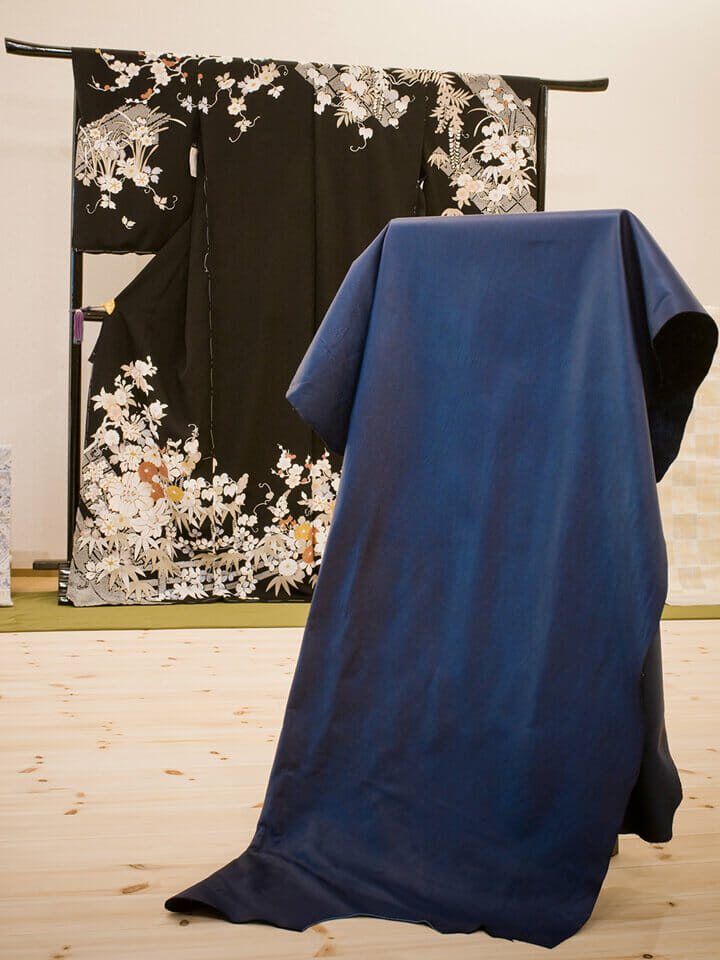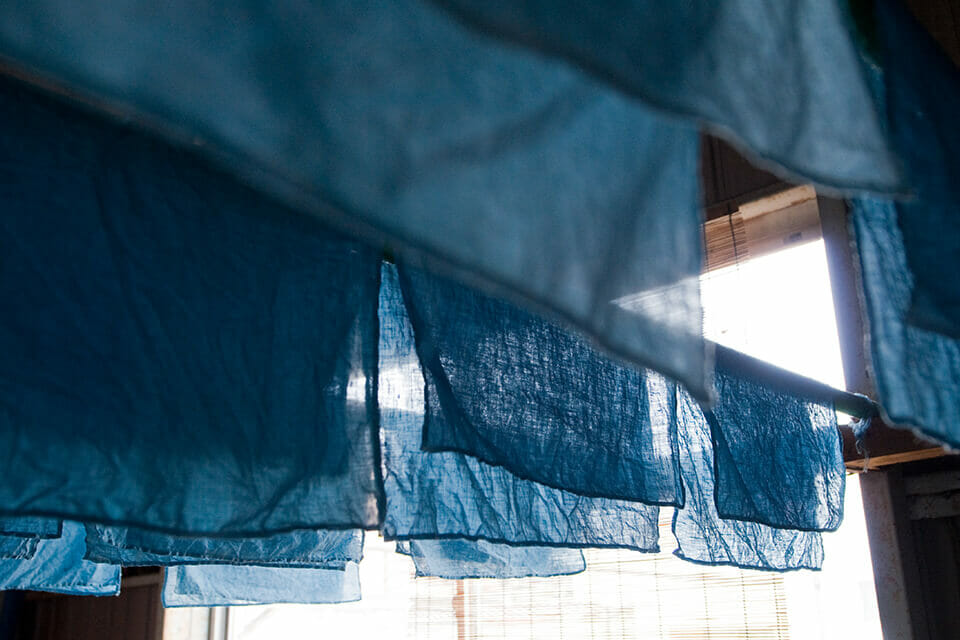
Creative: Kinuya
Kinuya:Locally produced ‘indigo’ Natural x Natural creates a gem

Indigo. Used in the uniforms of the Japan national football team, the color has been favored as Japan Blue since ancient times. The major production area is Awa Tokushima. The traditional technique of indigo dyeing remains in various parts of Japan, but almost all of the sukumo (dye made of fermented indigo leaves) that is the raw material is produced in Tokushima. "Since we are a kimono shop, we basically had nothing to do with leather. However, when I saw the odoshige obi pattern used in the early Showa period, I realized that this was leather. This was the beginning, " says Mr. Yamada of the kimono shop "Kinuya" that offers traditional Japanese designs in Tokushima. Tokushima is known worldwide for its indigo, but he wanted to change the fact that it is still not well known in Japan.
With the indigo color being used in the 2020 Olympic emblem, the interest in indigo dyeing has increased, and indigo dyed leather has been attracting attention from various industries. Kinuya is eager to develop a wide range of markets and new products in the future.
Indigo leather. Modern tanning techniques have not yet achieved this. Even if it produces a similar color, it is still different from the traditional natural indigo. If the tanning technique won’t work, then it’s best to go to a specialist. Mr. Yamada consulted with Koya, who has been deemed a "Modern Master Craftsman" in kimono dyeing. Natural leather is best dyed with natural materials. Using a technique called tennen-aku-hakko-date, the leather is soaked in a tub of dye many times over and dyed carefully. By doing so, the deep color, texture, and luster of Awa Ai is born. "I would like to collaborate with various industries with this indigo dyed leather and spread this indigo dyeing technique." Both leather and indigo are natural materials. Each piece of leather, each dye is different. Furthermore, each piece ages differently as you use it. The pride of Tokushima can be seen in the quality of the leather.
Indigo is a color that has long been loved all over the world, as represented by jeans. In Japan, sukumo made by fermenting indigo has been used as a dye for centuries. From the middle of the Edo period to the present, Tokushima is a major production area for the cultivation of Tade indigo, which is the raw material. 95% of the raw materials for indigo dyed in various parts of Japan are sukumo produced and cultivated in Tokushima. Its color, which is deeper and more beautiful than indigo produced overseas, is praised worldwide as JAPAN BLUE.
